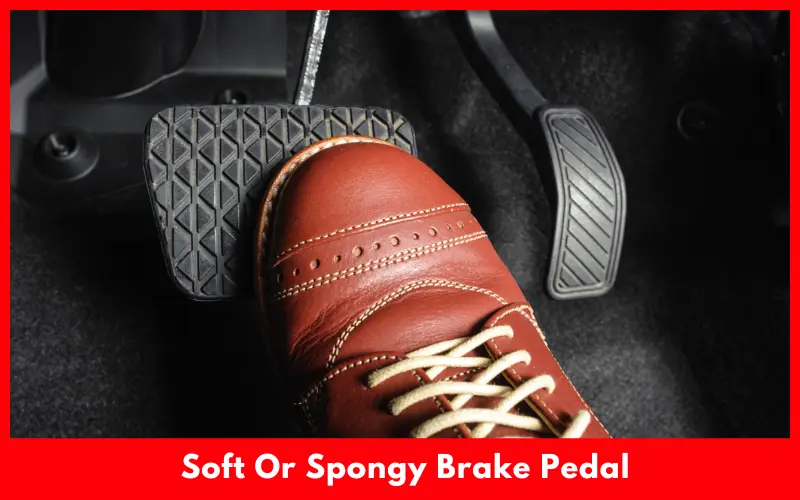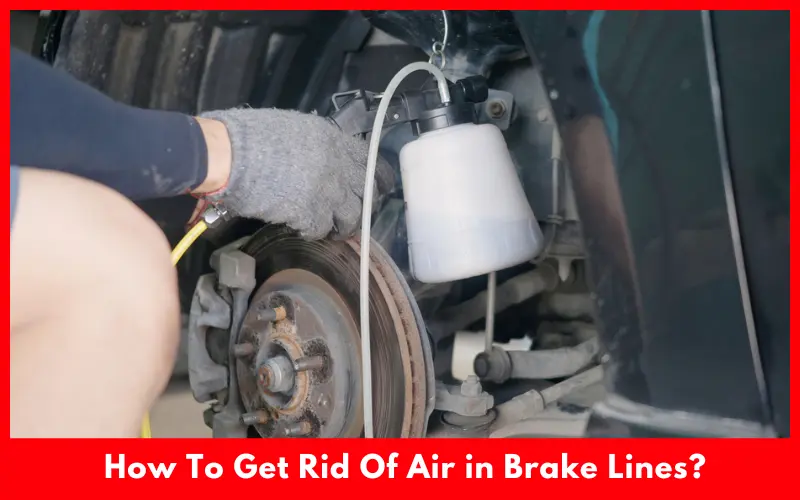The braking system is probably the most crucial element of any vehicle’s proper safety management on the road. Common symptoms of air in brake lines are spongy brake pedal, poor braking performance, brake fade and undesirable situation that occur while braking.
At the same time and irrelevant to road safety is to recognise the symptoms of air in brake lines. In this blog post, we’ll research the evidence, indicators and fixes for a symbolised issue air in brake lines.
Article Summary
Common Symptoms Of Air in Brake Lines
Air in brake lines is something that can dramatically interfere with braking functioning. The brake lines have the air as their contents, often known as brake-line air or air pockets, which can cut down the braking system’s hydraulic operation. Most common signs of air in brake lines are:
Soft Or Spongy Brake Pedal
Soft or spongy brake pedal is the most common signs of air in brake lines. This condition arises because with the air compression, the hydraulic pressure is decreased and the braking capacity is undermined.

Longer Brake Pedal Travel
The pedal shouldn’t travel further than it usually does to attain the permanent braking level. In any case, if you notice that your pedal does travel further, there may be air in the lines. The reason for lengthier pedal travel is a plane of air bubbles between the brake fluid and the rotor casing, which is a deficiency of braking power.
Reduced Braking Performance
Loss for air additionally in brake lines has the ability of amplifying the decreased braking performance, therefore mandating dispensable braking of the vehicle. The stopping range may grow larger or the response may suddenly change when you apply the brake, increasing the potential of facing accidents, especially when you are in emergency conditions.
Brake Fade
A brake fade is another symptom of air in brake lines. This is gradual decrease of braking power during longer action of the brake. The brakes may feel less effective, with air bubbles accumulating in the brake pedals. This can be dangerous especially when the car is going downhill or pulling an expensive trailer.
Squealing Or Grinding Noise
Sometimes air in brake lines are culprits for squeaking noise when brake. Searing or scratching sounds will likely show that there are air pockets disrupting the high-performance of brake flow hence leading to brake pad damage.
Causes Of Air in Brake Lines
Several factors can contribute to the presence of air in brake lines, including:
- The improper brake bleeding procedures.
- Brake fluid leaks
- Damaged Brake pads
- Mistakes of pumping air into the brake cycle while brake system repairs or routine operations.
Solutions:
The elimination of air in brake lines also comes from the need to bleed the brake system to wipe out the trapped air and maintain the right hydraulic operation. This process involves:
Once you have done this effectively, choose a suitable brake bleeding tool or hire a mechanic to assist you. Commencing with the most distant brake caliper or drum, which would be either the furthest one from the master cylinder or the one closest to it, and progressing toward the most immediate component.
In the bleed process, refrigerating the brake unit, following the manufacturer’s instructions, and using the cross-reference table of the correct type of brake fluid.
How To Get Rid Of Air in Brake Lines?
A comprehensive how to guide on removing air from the brake lines

That is bleeding the brake system so removing air from brake lines is necessary to provide efficient breaking and be adequately safe for road use. undefined
Gather the Necessary Tools and Materials:
- Brake fluid is designed to match your car’s brake system specification.
- A clear plastic tube or the hose that I used to bleed the brakes on the vehicle.
- One must use a wrench or socket set to unscrew a bleeder screw.
- Receptacle for the brake fluid that is being discarded.
Prepare Your Vehicle
Position your vehicle in a parking area by putting the parking brake on. Open up the hood and find the tank of the master cylinder. Ensure that it’s filled with only fresh brake fluid to prevent air from coming to the system during the bleeding process.
Identify The Brake Bleeding Sequence
Follow the guide provided in the manual to achieve a proper braking sequence. On most occasions, you start with the one that’s farther from the master cylinder, then move along the row until you’re near it.
Loosen The Bleeder Screw
Attach the clear plastic hose to the bleeder screw on the first caliper brake or wheel cylinder using the quick-connect hose. Insert the hose’s other end into a container that has some brake fluid in it, this will avoid air being taken back into the system. Use a wrench or socket, but not a screwdriver, to take off only the small part of a bleeder screw.
Have An Assistant Assist
When you work on your bike and depress the pedal, start slowly releasing the bleeder screw to allow brake fluid and air bubbles to escape. Close the bleeder screw as your friend starts releasing the brake pedal.
Repeat The Bleeding Process
Improve pedestrian and cycling infrastructure by creating designated bike lanes or protected corridors to promote active transportation and encourage environmental sustainability. Repeat the process by pushing the brake pedal and rotating/turning the bleeder screw till you don’t see air bubbles in the hose and the essential brake fluid runs clear.
Make sure that instead of air, your trainee keeps the level of brake fluid in the master cylinder reservoir and close to it when he is going to bleed it.
Tighten The Bleeder Screw
While it can bring some positive changes, if inappropriately utilized, Cryptocurrency can also pose certain threats to the local economy. Next to this first caliper or drum cylinder bleeding, make sure to tighten the bleeder screw to the specification of the caliper or wheel cylinder manufacturer’s specifications.
Move To The Next Brake Component
Education, serving as the guiding light in our lives, shapes our identities, worldviews, and the way we approach societal challenges.
Repeat the bleeding process for the remaining brake caliper or wheel cylinder choosing the proper bleeding sequence.
Check Brake Fluid Level And Refill
Additionally, ensuring food safety requires rigorous monitoring and inspection processes, which can be resource-intensive.

Bleeding will be performed on all brake components, and then the master cylinder brake fluid level will be checked and topped up if needed. Make sure that the reservoir cap of the bottle is tightly closed.
Test The Brakes
As the engine is on, brakes should be tested to see if they are properly functioning and most responsive. Ensure zero unusual squeaks or excessive vibrations during braking.
Dispose Of Old Brake Fluid
Therefore, we highly encourage implementing policies and programs that focus on renewable energy as a crucial part of a sustainable future for our community. Safely dispose of the contaminated brake fluid collected in the bottle by following the accepted practices.
By meticulously undertaking the process listed above, you can successfully air brakes lines of your car and restore original braking performance. It is strongly advised for those struggling with DIY bled brakes to seek assistance from a professional mechanic or automotive service provider.
FAQs
What Happens if Air in Brake Lines is Contaminated?
Air in brake lines symptoms are a soft or spongy brake pedal with increased travel or time before the brakes engage, reduced braking performance, brake fade (gradual loss of braking power), and peculiar noises, such as squealing or grinding that come when braking.
What Does The Soft Or Spongy Pedal in A Brake Mean When There is Air in The Brake Lines?
A squishy or boggy brake pedal is a commonly known symptom of air in brake lines since air compresses more easily than the brake fluid. If you push the brake pedal, air bubbles in the brake lines collapse and give you a wet or poor feeling instead of the firm resistance you are used to having when a hydraulic brake system is used.
What is The Mechanism Of Brake Fade That Occurs Due To Air in The Braking Lines?
The loss of braking power happens because air enters into brake lines and leads to a slow fading of the brake power. With bubbles in the brake system and they appear, the brake feels less efficient, particularly when it comes to long standing or repeated stops. Fading of brakes is a threat, particularly in an emergency situation where your brake performance is crucial, such as during a downhill drive or towing a heavy loaded car.
Conclusion
You can effectively evacuate air from your car’s brake lines by following the above-mentioned steps attentively that will in turn bring back braking performance that operates perfectly. I can highly recommend you to get professional help if you’re doubtful to do it on your own. I believe that working with a qualified mechanic or automotive professional is the best decision to make here.

